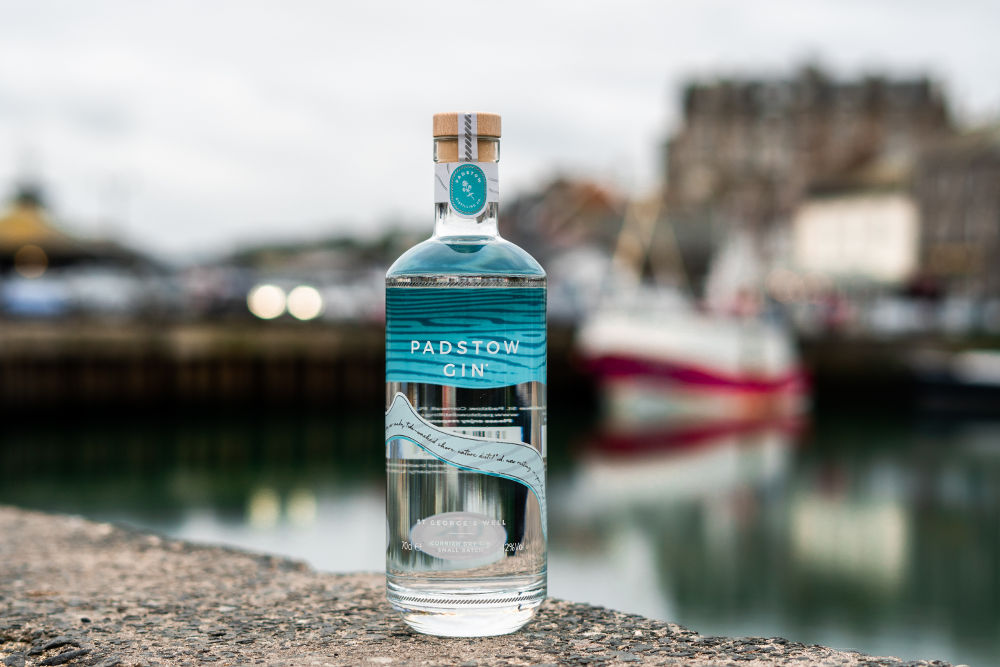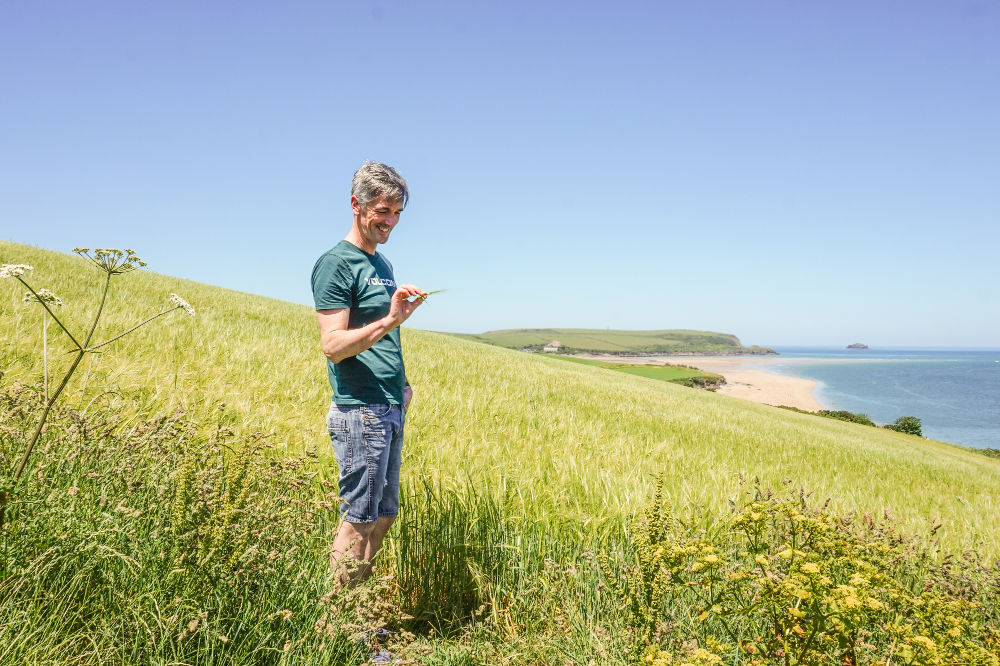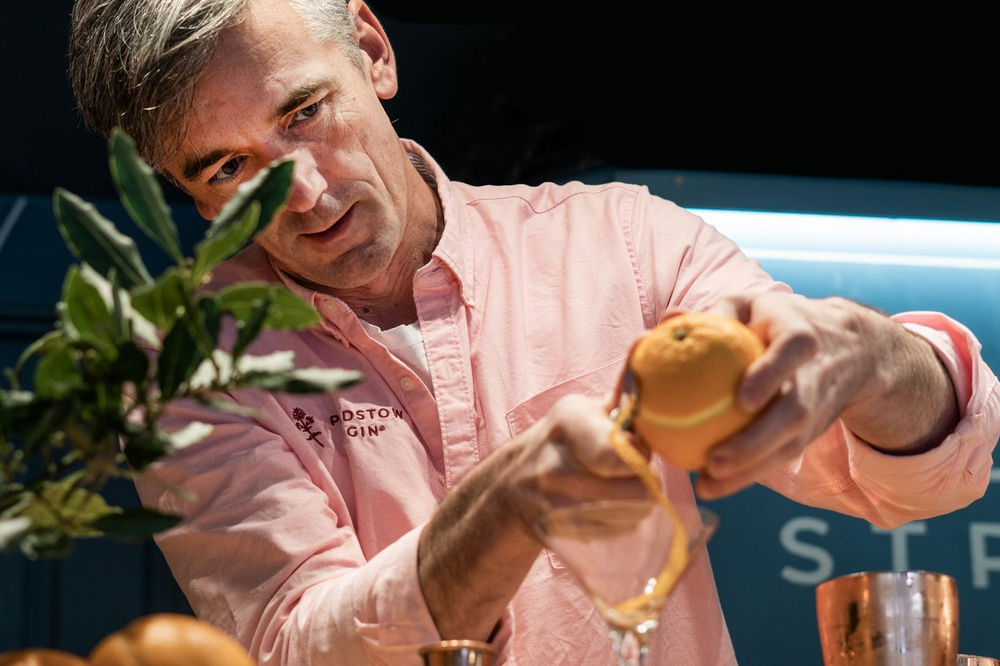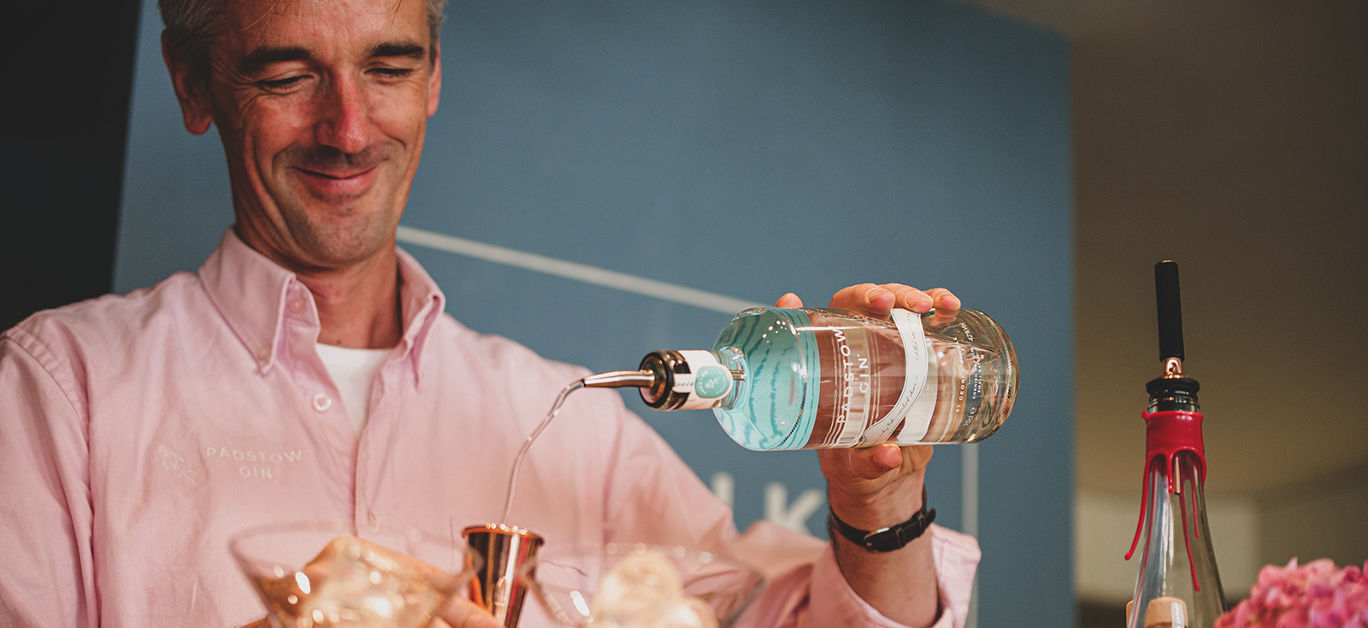Since the launch of his Padstow Gin ‘St George’s Well’ in 2020, Cornish wine-merchant-turned-distiller David McWilliam has garnered global recognition for his small-batch spirits reflecting the rich geography of his home in Padstow.
As the key ingredient behind his award-winning gin comes into season, we catch up with David on his journey so far.
You only started making spirits in the last few years. What is your background and how did you end up making the award-winning gins available today?
I worked in wine from the age of 17, where a happy accident landed me a job as a wine waiter. I continued to work in wine in Cornwall from 1995 before setting up a successful wine merchant and bar in Padstow. I have great respect for the history of wine and regions – particularly of the environment, of place, of terroir – and over this time, my curiosity in spirits grew.
I wanted to sell gin but was quietly ignored by several spirit producers. In the end, it was my partner, Sarah, who came up with the idea to make my own. I knew I had to create something that was different to the hundreds of brands already out there – a gin that would have its own story to stand out amongst the noise. We had many false starts with our trials, but my experience experimenting with flavour in food and wine matching gave me the tenacity I needed to develop that original recipe.
We launched our first batch of Padstow Gin over a lockdown Zoom in April of 2020.

How have you captured the essence of Padstow in your gin?
Dissatisfied with using the usual concoction of botanicals in the copper pot-still, I knew I had to bring the essence of Padstow into the glass organically. Since my early years I had walked the coast of Cornwall and as a hungry little kid, would take note of the sights, the seasons and the scents, so there were several contenders for the recipe.
In the end I chose Alexanders, a plant with a fragrant, sweet and spicy scent and taste reminiscent of angelica and fennel. This was the key ingredient I had been looking for and the result is a unique recipe, one that echoes the place I love so much. In spring each year you’ll find me foraging for Alexanders on the cliffs above the beach on the western side of the estuary, for our Original and Navy Strength gins with their refreshing, coastal flavours.

What makes your gin different?
Gin is made by taking a neutral spirit and infusing it with botanicals during the distillation process, the essential of those being the juniper berry. Before this happens, the base of a spirit starts with an organic product, usually grain but this can also be molasses, fruit or root vegetables. This undergoes fermentation in water, turning the natural plant sugars to alcohol. It is then distilled in several stages to liquid ethanol at about 96 per cent alcohol by volume.
Many producers of gin quite legitimately bypass this stage (it’s quite a faff), shipping it in from anywhere in the world for their base. It can be 10-20 times cheaper and is used in many day-to-day liquids from fuel to hand sanitizer. This was a route I was keen to avoid as I wanted Padstow Gin to reflect the beautiful geography that surrounds us here in Padstow, much like a winemaker will harness the character of his region through his winemaking.
We use barley grown at Tregirls Farm in Padstow above the Camel Estuary. The farmer Charlie is third generation, farming the finest barley in the fields along the beaches of the estuary where the growing grain is treated to all the Cornish coastal weather has to offer: sun, rain and of course the freshest sea-breezes which keep it healthy. The quality of this grain is second to none and that is reflected in the smooth, flavoursome base of the spirits.

Padstow Distilling has a bar, too. What’s the best gin cocktail?
While the Padstow Martini made with our original gin ‘St George’s Well’ will always be an absolute classic, a firm favourite amongst visitors to our cocktail and wine bar at 17 Duke Street is the ‘Rose 17’, a delightful fragrant pink cocktail that combines our deep-frozen Padstow Rose Gin with Simonsig Satin Nectar Rosé, a rich and fruity demi-sec sparkling wine. We build it into a Champagne flute and top it with a fresh strawberry, so pretty.
What’s next for Padstow Distilling?
Our new stills begin to arrive in March this year giving us much better control of our production: I’m a natural experimenter as you might imagine so there will be lots of ‘specials’ to keep a look-out for, not the sweeter flavours but developments with citrus and more local botanicals. In the bigger picture, the expansion is giving us an eight-fold production capability, enabling us to reach further around the country. We’ve several avid followers already, but we’re already seeing some really strong interest, especially from those who look for provenance – and it’s the terroir that does the talking.
All imagery credit: Padstow Distilling






















